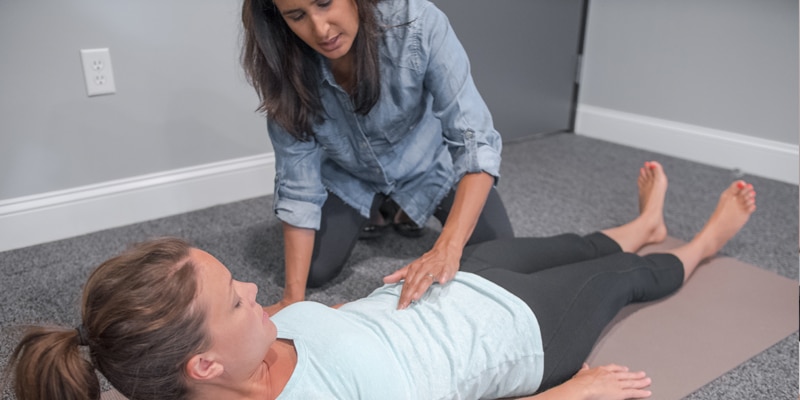
Rebalance’s Hina Sheth explains Diastasis Recti in our 3-part video blog below:
What is a diastasis?
A Diastasis is a splitting of the rectus abdominus abdominal muscles (the “six-pack” abs) from the center tendon of the abdominal muscles called the Linea Alba.
When you have a Diastasis, it can cause everything underneath to push out, so you feel like your body is distended. Diastasis can occur in women and men but typically it occurs in women during pregnancy and postpartum.
Diastasis Recti is normal when you’re pregnant, because as you progress your belly starts to expand to make room for the baby. After you have the baby, it should close and come back together. But in 37% of women, the diastasis continues and it often goes undiagnosed.
What are the symptoms?
If you have a Diastasis, you can have one or more of these symptoms:
1. A belly button that is inside out
2. A bulge in the midline when you sit up or lower or raise your legs..
3. Gap in the midline and protruding belly
4. Feeling like you are still pregnant in your 1st trimester.
Fixing a Diastasis Recti isn’t as simple as doing a specific exercise. There are three layers of the abdomen and they all have to be working efficiently and in alignment to fix a Diastasis.
The Layers of the Abdominal Muscles
The top layer is the rectus abdominus, the middle layer is the internal and external oblique muscles and the transverse abdominus is the deepest layer of abdominal muscles.
Just strengthening the transverse abdominus won’t necessarily close a Diastasis. All of the abdominal muscles need to fire in a certain pattern. If any one layer is dominant, it can prevent the Diastasis from closing. There needs to be good balance between all three muscle groups.
The Abdominal Canister
There’s more the closing a Diastasis than just the abs. These muscles are part of a bigger group of muscles in the Abdominal Canister.
The Abdominal Canister is made of four different types of muscles: the deeper abdominal muscles (front), the pelvic floor muscles (bottom), the deeper muscles of the spine (back) and the diaphragm (top). These four muscle groups work together to support the spine, the trunk and the organs in the abdomen. These need to work with the ab muscles to load the tension through the Linea Alba and get it firing properly
Pelvic and Rib Cage Alignment
If the abs aren’t working correctly, it could be an alignment issue either with the rib cage (where the abs attach) or perhaps the pelvis might not be sitting level. If there is an alignment issue, the ab muscles won’t be able to load and fire correctly to help the Linea Alba close.
How do I treat it?
Everyone is different, with different alignment issues and different abdominal patterns, so there is no cookie-cutter approach to closing a Diastasis.
Home remedies like binding can help to reduce a Diastasis or make it look like it’s closing for a short amount of time.
Ultimately, you need to have a thorough evaluation to identify any alignment issues or problems with how the abs are firing. It’s important to get all four muscle groups working correctly to help you build stability in that area.
At Rebalance we use a combination of many different techniques because every person presents differently and may need different combinations of treatment.
1. Lay on your back and take your index finger and middle finger and place them on your belly button.
2. Raise your head and feel the gap in the middle of the two areas of tension (the rectus abdominus). The gap in the middle is where your Linea Alba should be. Typically, you should have only a finger width and a half between those two areas of tensioning.
3. Check at the belly button, one inch above the belly button and one inch below the belly button. You can have a separation at any of those areas through the Linea Alba. However, it’s more common to have the most width at the belly button.
4. Check the depth in addition to the width. You should feel that there is a stopping point when you try to place your fingers down. There should be no softness.
If there is depth/softness that means the Linea Alba is not strong. If there is width of more than a finger and a half, that means that there is a significant separation.
If you did this test and you’re finding it’s positive, your Diastasis Recti could also be correlating to some other symptoms, such as low back pain, hip pain, pubic bone pain, SI pain, incontinence or prolapse. Often many health care professionals do not check for a Diastasis when treating those problems.
If you’re in the Philadelphia-area, visit our website invincible-pun.flywheelstaging.com for more information or to schedule a complimentary phone consultation. If you’re not in the area but are seeking a recommendation, contact us and we can help you find a professional in your area.
In-Person and Online Consultations


